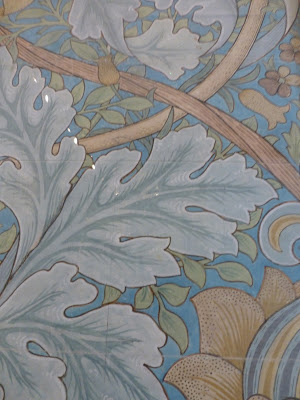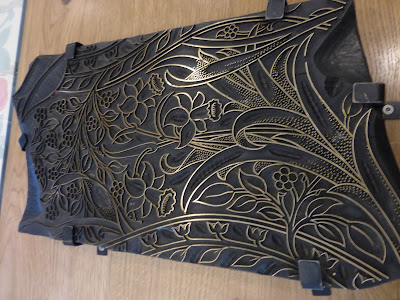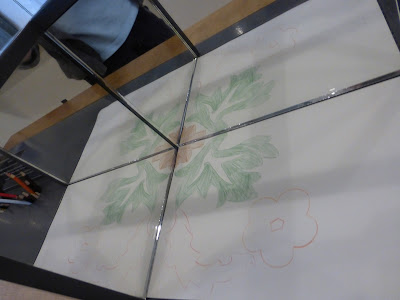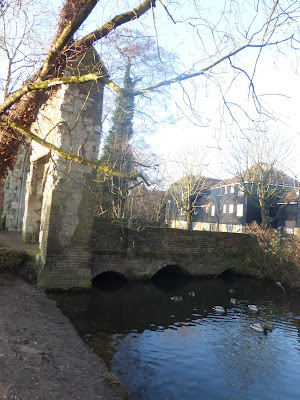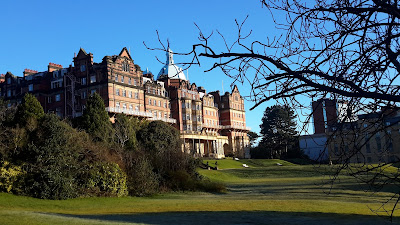 William Morris,the designer, was born in Walthamstow in 1834 and lived in this house as a teenager.
William Morris,the designer, was born in Walthamstow in 1834 and lived in this house as a teenager.Coming from a wealthy family, they were not pleased by his choice of artist as a career rather than clergyman. The house is now the William Morris Gallery and tells the story of his life as well as displaying examples of his work.
Many of his designs have survived and are still printed today on fabrics and wallpaper. This is the design for a printed textile. you can see where Morris has made alterations and lines have been rubbed out. Morris drew, revised and finally coloured a pattern on one sheet of paper believing that a harmonious piece of work should be done in one attempt.
A rose trellis inspired this design, his first ever wallpaper.
In 1880 this design was used to decorate The Grand Staircase at St James's Palace.
It was another of Morris's designs on silk damask that upholstered George V's coronation throne. The photograph of the throne was used in the Morris and Co catalogue. The Royal connection made a good publicity coup.
Many of his printing blocks were displayed in this room.
His daffodil pattern printing block.
At the back of the house there is a public park.
The house was built in 1740 for a wealthy merchant. It was known as Water House as it had a moat. After the Morris family left this house it was bought by Edward Lloyd, a successful publisher, in 1857.. The family eventually gifted the house and estate to the council for a public park to be created. It opened to the public on 28th July 1900 and is known as Lloyd Park in his honour.




